How to Sneak Home for the Holidays
by Matthew J.X. Malady

People drop things on the Internet and run all the time. So we have to ask. In this edition, Decider.com deputy editor Tyler Coates tells us more about that thing where you go home for the holidays and then run into random people from high school at the grocery store.
Just played How Many High School Classmates Can I Avoid At Food Lion and killed it yet again.
— Tyler Coates (@tylercoates) November 28, 2014
Tyler! So what happened here?
It was the day after Thanksgiving, and I ran to the Food Lion (which is a grocery store chain for those not from the Mid-Atlantic region) in my hometown. I’m from a VERY SMALL TOWN called Montross in the Northern Neck of Virginia, which is that northern-most peninsula in the Tidewater region between the Potomac and Rappahannock rivers. (Even most people who live in Virginia don’t know where this is.) The population is roughly 300 people, which I like to brag about even though it’s a bit misleading: The town limits are very small (I grew up right outside of the line), and there’s really a few thousand people in the surrounding area — the greater Montross metropolitan area, if you will, which includes one stoplight, the Dairy Freeze, and a couple of tourist attractions like a state park and Robert E. Lee and George Washington’s birthplaces.
The point is: It’s hard to hide from anybody. Both of my parents grew up around there and went to the same high school as me (at least one of my mom’s teachers taught me for three years), my grandparents grew up there, and everybody knows everybody. I enjoy going home to visit my mom for holidays, but for the most part I hang out in her house eating snacks and watching TV. I don’t really keep in touch with a lot of people I went to high school with — most of my closest friends (which, to be honest, there aren’t many) moved away after college, just like I did.
It’s not that I actively dislike anyone that I went to high school with, as the 10+ years since graduating have allowed me to get over all of that. But, you know, I did not have the easiest time growing up in a rural Southern town. I got picked on through school for a variety of reasons: I was short, scrawny, liked reading more than playing sports, and, duh, was totally gay, although I didn’t come out to anybody until after college. And it’s not like my family and I posted a bulletin in the weekly newspaper: People just sort of found out on their own, because it’s a mostly conservative area and you don’t run around with Act Up buttons and rainbow flags (as I do every day here in New York, OBVIOUSLY).
Anyway: I went to the Food Lion to get something for lunch (I was already tired of Thanksgiving leftovers less than 24 hours later). Now, the local grocery store is generally a hub for all kinds of social interaction. You just never know who you’ll run into! The morning that my dad died a few years ago, I ran into two men that go to my parents’ church there (I think I had gone to buy tissues, or something? I probably just needed to get the hell out of the house) and broke the news to both of them within a 10-minute span. That’s the kind of close-knit place I’m talking about: Within the hour of your dad’s death, you’re going to run into someone you don’t know particularly well but has still been someone you’ve known all of your life. And odds are his son called you a fag when you were both teenagers.
Luckily, I didn’t have to stop and chat with anybody, although I definitely ran into a girl from my class who is now dating another guy from our high school who I had a minor crush on back in the day, and who is still pretty hot. They didn’t recognize me, though, so I was able to breeze on through without making small talk.
What strategies have worked best for you in these situations? Can you run down some tips and pointers that we can use when forced to go to the store back home over the holidays, because this seriously happens to everyone every damn year.
On this particular day, I went prepared with my version of that thing when glamorous movie stars go “incognito” out in public: I wore aviator sunglasses and a knit hat. I have the benefit of looking a lot different than I did in high school, thank God. I’m probably two inches taller than I was at graduation, about 45 pounds heavier, and I have a beard. I look nothing like the awkward kid who worked at the pharmacy in high school and basically interacted with everyone in town (and knew what drugs they were on, which I’ll admit was a nice bonus).
I’ve never been rude to anyone I’ve run into, because that’s not really my style (also, all of this is me being 100% neurotic and crazy, as I sometimes feel myself morph into that weird teen whenever I’m home even though, when I stop to think about it, I’m doing A-OK these days). Only once have I actively avoided speaking to anyone, and that was one of my high school English teachers who made it her mission to make me feel terrible about myself not just throughout senior year but also after I graduated and visited home from college. (I was wearing a James Madison University shirt, which is where I went to college, and she told me she thought I went to William and Mary. When I told her, no, I did not get into W&M;, she replied: “Maybe it’s for the best. I’d be really worried about you there.” Gee, thanks, lady!) Last April, when I was visiting for a week with my boyfriend, I turned into the frozen food aisle and saw her at the other end, and I considered climbing into a freezer just to avoid her seeing me and coming up with another way to undermine me. (I was 29 years old when this happened. I am ridiculous.)
In terms of tips and pointers, I don’t think I have any good ones other than swiftly moving to another aisle when you encounter someone you’d rather not speak to. A college friend of mine once admitted that she climbed into a department store’s clothing rack when she saw a frenemy from high school at the mall. I guess if you’re able to do that surreptitiously, go for it! (It’s kinda fun.)
Lesson learned (if any)?
I think the real lesson is that nobody gives a shit? I mean, I’m not a local celebrity, and no one is going to stop me, and also speaking to people I haven’t seen in years is also not going to be a pain in the ass. If someone makes a friendly gesture such as engaging in conversation, it’s because they are good people and not because they want to make fun of me or inadvertently remind of me of a time when I hated myself more than anything else in the world. It’s also a good reminder for myself not to be a total dick and think that I’m too good to speak to anyone in my home town, because doing so is actually completely rude and not nice, and despite what anyone might think about me, I mostly just want to be nice and friendly with people.
Just one more thing.
One Christmas, I went to the Food Lion to buy a bottle of wine to take to a friend’s house, and I only had a temporary license (I was waiting for my New York license to arrive in the mail) without a photo on it. I was astounded when the cashier carded me, and embarrassed because I didn’t have any proof that I was almost 30 years old. So I said, “Uhhh, my name is Tyler and we took Spanish three years in a row? Do you remember me?” She let me buy the wine.
Join the Tell Us More Street Team today! Have you spotted a tweet or some other web thing that you think would make for a perfect Tell Us More column? Get in touch through the Tell Us More tip line.
Photo by Mark Sardella
Perfume Genius, "Fool"
Here is a video that plays like its song, which might be my favorite track on Too Bright: it is tense-making but completely comfortable, and has no need for a climax.
Get Your Party Started in an Instant With Hasbro!
Get Your Party Started in an Instant With Hasbro!
by Awl Sponsors
Brought to you by Hasbro
Want to start an instant party, anywhere, anytime? Check out Hasbro’s Pass & Party line which includes party games like Catch Phrase Decades, Taboo Buzz’d and Trivial Pursuit Hints. You and your friends will share and create laugh out loud moments in seconds!
Check out this video above to see how quick and easy it is to jump into a party game and turn up the laughter, no matter where you want to start the party! Head over to Hasbro Games to learn more about Hasbro’s Pass & Party games.
Citizens Inconvenienced
“’The [holiday] market is under security,’ said Farukh Gadov, a manager at a waffle food-stand in Union Square. ‘They’re making sure [protesters] avoid the market.’”
— Protests against the state’s frequent, sometimes fatal use of excessive force against African Americans are adding to the stress of daily life, notes the Wall Street Journal, but at least you can still shop the Union Square holiday market without too much trouble. Have a snack while you’re there, it gives you a little extra energy when all that shopping tuckers you out.
The Trailer Park at the Center of the Universe
by Andrew Thompson
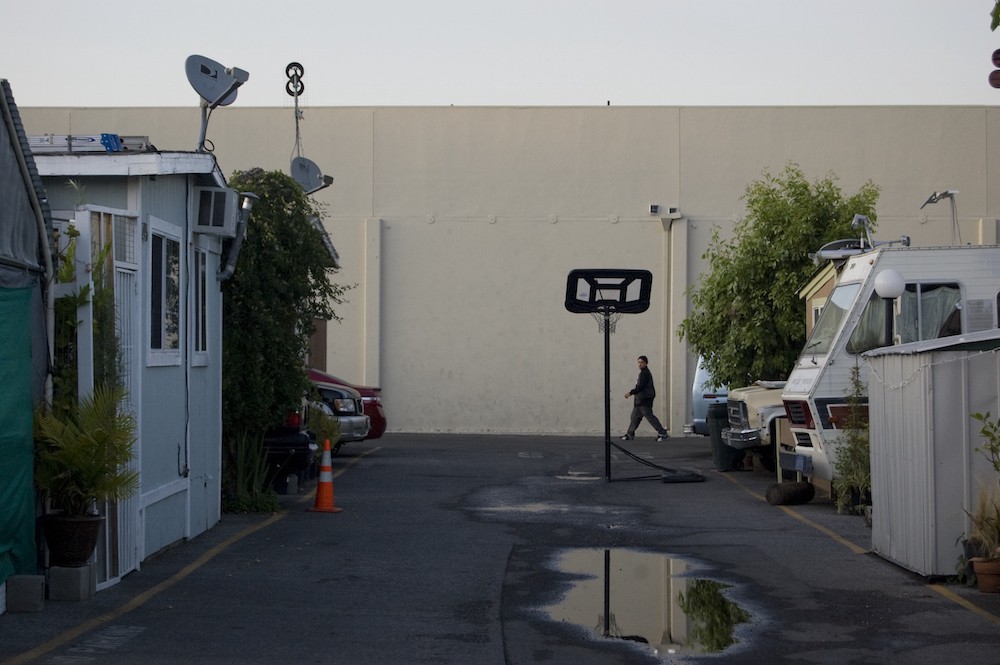
The longest road in California is El Camino Real, a six-hundred-mile route that once connected twenty-one Spanish missions from San Diego to Sonoma. While the state began to pave over the road in the nineteen tens, portions of it still run throughout California, including every city on the San Francisco Peninsula. In Palo Alto, El Camino begins at Stanford University, where it winds past the Stanford Shopping Center, a regal, open-air mall with an Ermenegildo Zegna but no Foot Locker, restaurants but no food court. As the road continues southward, it passes a series of newly finished luxury apartments, then half-completed luxury apartments still wrapped in scaffolding and tarp, followed by a showroom for Tesla, and one for McLaren. Then, finally, it reaches the city limits at the border of Mountain View, about two-and-a-half miles from Google.
A few blocks before the car dealerships, tucked behind a strip mall with a health spa, a Baja Fresh and a Jamba Juice, is Buena Vista Mobile Home Park, a four-and-a-half-acre plot of land roughly in the shape of Utah. The park’s five small streets are not flanked by sidewalks, and the territory of each trailer seems to bleed into the next. Unlike the recent vintage mini-mansions and luxury condos constructed in tightly uniform patterns of stucco and beige, Buena Vista’s hundred and eight mobile homes are a patchwork of styles: Some are an inoffensive industrial brown, one is evergreen, one is baby blue, one has a roof lined with Christmas ornaments that appear to have been hung in the mid-nineties and never taken down. The park houses about three-hundred-seventy-five residents, who are mostly low-income and predominantly Hispanic. It is the last mobile home park left in the city limits.
Buena Vista, which started out in the nineteen twenties as a road-stop with a gas station, general store, and lodging for passersby in the then orchard-rich Santa Clara Valley, was bought by Toufic Jisser and his wife Eva in 1986, along with investment partners, whom the Jissers bought out in 1999. In October 2012, the Jissers’ son and park manager, Joe, sent a letter to residents to inform them that the family was “working with a local real estate firm to explore possible redevelopment options.” That firm was Prometheus, the largest private apartment developer in the Bay Area, which had signed an agreement more than a decade earlier, in 2000, to purchase the land “upon the occurrence of certain events.” The agreement remains confidential, but one of the assumed prerequisites was that Palo Alto allowed the Jissers to remove the park’s residents; a city law required the Jissers to create a plan to pay to move the residents to a “comparable mobile home park” if Buena Vista was sold.
After receiving the letter, a number of Buena Vista’s residents decided to speak out against the impending sale during the public comment portion of a city council meeting scheduled for that month. The normally half-empty council chambers were so packed that the council took the unusual step of limiting each speaker to just two minutes. Erika Escalante, now president of the Buena Vista Residents’ Association, began the procession of comments with a brief statement of purpose. “We wanted to come here today to see if we can get some concrete and reliable information” about the the specifics of the sale, which were not detailed in Joe’s letter. She was followed by nineteen-year-old Miguel Sanchez. “We are worried about our education,” he said. “For students who are currently going to Palo Alto Unified School District…they really can’t be compared to other schools around the area.” Next, a woman asked where the people with disabilities and limited income will go; another woman said she had a disability and could not afford rent anywhere else; a seven-year-old said, “I am scared because my mom cannot afford so much money for another home,” and walked off; four more children testified after her; and finally, Winter Dellenbach, a retired civil rights attorney, said the city was abandoning its most significant remaining source of affordable housing. The commenters were thanked for their time and council began the rest of its meeting.
A few weeks later, in December, the residents hosted a Posada — a Mexican Christmas party — and invited the entire city of Palo Alto. “Because [Buena Vista] is kind of an odd placement,” Escalanate, who has lived in the park for fourteen years, told me, “a lot of people did not know where Buena Vista was. So it was kind of like to say, ‘Hey, we’re here, come meet us and get to know our community.’” A few hundred people showed up, including the mayor, members of the fire and police departments, and several council members. “We told them that if we’re still here by next year, we’ll do another one,” Escalante said.

In mid-May of this year, Craig Labadie, a hearing officer appointed by the city, held three days’ worth of hearings to determine if the Jissers could remove Buena Vista’s residents and sell the park. The Jissers were represented by their lawyer, Margaret Nanda, who argued that nearby parks in cities like Redwood City and Sunnyvale were sufficient replacements for Buena Vista, and that the Jissers’ relocation plan was more than fair, as they had offered to pay: the residents’ moving costs; first and last month’s rent and a security deposit at a nearby mobile home park; lodging costs in a motel for the move; a twelve-month rent subsidy to make up for the difference between the six-hundred-eighty-five-dollar rent at Buena Vista and the rent at the new park; and the cost of deconstructing and moving the mobile home if it was still possible to move it. The Jissers also offered to buy mobile homes for their appraised value if they could no longer be moved. Besides, Nanda said, the Jissers had a fundamental right to sell the property.
The park’s residents argued that the prices offered for their homes came out to about half of their original values, turning their investments into losses in a town that has otherwise seen real estate prices explode. When Escalante’s parents moved down the street to a different trailer, she bought their trailer for twenty-three thousand dollars and spent another twenty thousand on renovations, which included a new hot pink paint job, dark, handsome hardwood floors, and a refurbished kitchen. The Jissers offered Escalante eighteen thousand dollars. Another resident, Blanca Fonseca, a thirty-nine-year-old Mexican immigrant who has lived in the park for nearly half her life, testified at the hearing, “My husband and I looked around two weeks ago over Sunnyvale and Redwood City, four hours driving in the car looking for mobile homes on sale. Most are in the seventy-thousand-dollar price range and up, which, with the twenty-three thousand dollars from our appraisal from the owner, we can’t buy half the homes in the area.” (She later told me, “The cheapest home I could find was unlivable. It didn’t have windows; it didn’t have doors.”)
Residents also argued that the Jissers shouldn’t have even bothered drawing up plans to move them, since a “comparable mobile home park” doesn’t exist — Buena Vista is in Palo Alto, the birthplace and command center of Silicon Valley and the densest concentration of venture capital in the United States. It has one of the best public school systems in the nation, its city services border on luxuriant, and it is impeccably safe. A consolidated community of mostly poor Hispanics in a wealthy, mostly white city is a community that is by definition ghettoized, but Buena Vista’s residents argued that it is without rival, especially when compared to East Palo Alto, the city across Highway 101, which in 1992 had the highest murder rate in the country.

One day during the nineties dot-com boom, a couple of startup employees went to what is now the Palo Alto Creamery, a diner with an eighty-five-year history of delicious milkshakes. The employees, who were there to celebrate an IPO — the company’s name has been lost to legend, according to the manager — ordered a round of Bubbly Burgers, listed on the menu as “one of our delicious burgers and a chilled bottle of Dom Perignon,” for a hundred and ninety-five dollars. The item had been added to the menu a few years earlier as a joke by the owner of the Creamery; with that order, it passed from gag to IPO rite of passage. Startup founders “would have stock options and no money, so once they hit a home run, they could come in and buy a Bubbly Burger,” the manager told me recently. “When PayPal went public, they had sixteen guys come in here and order eight Bubbly Burgers.” He couldn’t remember how many they sold throughout the boom — just that it was “a lot.”
It’s difficult to call what has happened in Palo Alto over the last forty years “gentrification” in the same way that the term is used in many larger cities, but what has happened in the Valley is perhaps an even more remarkable form of post-industrialization. When I grew up there in the early nineties, Palo Alto still allowed an aesthetic lawlessness on par with any other American town, with luxury homes sitting next to ramshackle ones, and beat-up Volkswagens planted in driveways stocked with collections of junk piled onto tarps. I often went my grandmother’s home, in the Midtown neighborhood, where she had moved in the nineteen thirties. She lived down the street from what was then a grocery co-op and a small pharmacy that sold bad toys; Steve Jobs lived a mile away, his front yard a wild field of grass. Across the street, my father’s friend and coworker at a biotech company in the East Bay lived in an Airstream trailer in the driveway of his own father’s house, where I often played with his grandson. By then, Stanford had already become one of the foremost engineering centers in the world, but native Palo Altans would have still vividly remembered Joan Baez’s first protest after leaving a Paly high school classroom during an air raid drill in 1958 and the beginning of her music career on University Avenue, or the Grateful Dead playing early shows in the town’s coffee shops.
There’s no firmly agreed-upon point when it all changed, but residents generally peg it to the late nineties. The nineteen sixties “was the beginning of the wealth, but it wasn’t off-the-charts wealth,” Steve Staiger, a historian at the Palo Alto Historical Association, told me. “It was just people could buy nicer cars than most people in America, but they weren’t buying Ferraris and Lamborghinis like they are now.”
In the fifties, when Stanford began to turn itself into an engineering mecca, it lured William Shockley, the inventor of the transistor, to the area. He created Shockley Semiconductor in 1956, and a year later, eight employees dissatisfied with Shockley’s often tyrannical management style defected, forming Fairchild Semiconductor. Fairchild was a kind of early Y Combinator, a breeding ground for pivotal companies that would form the basis of Silicon Valley, like Intel, AMD and Kleiner Perkins. People migrated to work for burgeoning technology industry, both as engineers at newly established companies and as workers in the local factories that put together all those transistors and machines. After the formation of Intel and the development of the microprocessor in the late seventies, the city attracted a new generation of engineering talent, and city employees who rented or didn’t already own their homes slowly became unable to afford to live in the city they worked for. “Prior to that, there was the expectation that a police officer or commander would live in the community or the next town over,” Staiger said. “Now they live in the Central Valley; they live a hundred miles away or more. Employees live in the East Bay or South San Jose or farther south. Or they’re still in college and live with their parents.”
According to the New York Times, venture funding rose from seven hundred and seventy-five million dollars in 1995 to nearly five billion dollars just three years later. Venture capital firms like Kleiner Perkins — whose co-founder, Eugene Kleiner, was one of Shockley’s original employees — began bankrolling the new e-world. Tech companies launched IPOs on Wall Street; Wall Street money came back to the Bay Area; and Stanford and Sand Hill Road were suddenly dual centers of a new universe. The IPO bubble burst in 2000, but in time, venture capital rose again.
Today, Sand Hill Road commands the highest office real-estate prices in North America — rents average a hundred and fourteen dollars per square foot — and El Camino is congested with BMWs. The average home price in Palo Alto has skyrocketed from six hundred and forty thousand dollars in 2000 to two million dollars in 2014, as humble World War II era houses are replaced with small palaces on streets beautified to a Singaporean spotlessness. In the ten years since I’ve left, nearly all the venues I frequented most as a teenager for licit activities, including a community center that hosted all-ages music shows and a twenty-four-hour Denny’s, have closed.
In late October, Marc Andreessen, the co-founder of Netscape and the venture capital firm Andreessen Horowitz, responded to a question about the homogeneity of the tech industry in an interview with New York Magazine:
There are two fundamental problems that are resulting in what a lot of people believe is discrimination, and these are the problems that I think need to be solved. One is inequality of education. If you come up through a path that’s sort of a stereotypical upper-middle-class American path and you go to Stanford and you get a really great technical education and your professors really care about you, then you come to Silicon Valley and you’ve got the skills and you’re golden.
But, of course, most people in the world — including most people outside the U.S. but also people in the U.S., like where I grew up in rural Wisconsin, or people in the inner city — never have access to that kind of education.
On an afternoon in early June, I met with Amado Padilla, a professor of education at Stanford, at Printers Café on California Avenue, one of Palo Alto’s two walkable commercial strips. California Avenue housed Facebook’s second headquarters after it moved from a rented floor in a multi-unit building on the other, larger strip, University Avenue, and before it moved to neighboring Menlo Park in its present massive campus. A block away from the café, Cho’s, a dingy Chinese restaurant whose cheap potstickers were something of a town staple, had been evicted by its landlord after thirty-five years in business just one week earlier.
Padilla had read online about Buena Vista’s possible closure in 2012 and got in touch with its residents. “I started going out with them, just to meet people, talk to people, talk to kids, just to kind of become familiar with it,” he said. Padilla organized pizza parties for the teenagers to talk about how they felt about a potential eviction, recruited a local psychotherapist and organized counseling sessions for the residents and spent time querying them for his studies. In January 2013, Padilla conducted a formal study and found that, in contrast to a twenty-nine percent dropout rate among Hispanics elsewhere in Silicon Valley, Buena Vista’s dropout rate among its thirty-one high school students was zero. “These benefits stand in stark contrast to low-income Hispanic children living in less affluent communities than Palo Alto,” the conclusion of the study read.
Padilla later testified in the May hearings that many of the students had gone on to community college or four-year schools. Erika Escalante went to Palo Alto’s Gunn High School in 2004 and now works as a program manager at the Palo Alto Medical Foundation, a health-care provider. During my visit to her home, her seven-year-old son, Andre, who attends Barron Park Elementary School, frittered around on a tablet — in a few years, he can upgrade to an iPad, which is standard issue to every Barron Park fifth grader.
Just after the Buena Vista hearings concluded, Padilla published another hearing — a survey of residents of the nearby neighborhood of Barron Park, about their support for keeping Buena Vista’s residents in Palo Alto and their children in the city’s schools. About seventy-five percent of respondents thought that the city should work out a solution that would allow the residents to stay in Palo Alto, and more than eighty percent said the city should find a way to keep the children in Palo Alto schools. The latter would be easy enough: Students from East Palo Alto are often bussed to Palo Alto High School, and students who live in the Gunn catchment are routinely allowed to attend Paly.
Some wrote comments in the margins of their responses: “The mobile home park has been here for at least 50 years with NO problems. We do not need more high rise development in Palo Alto with high price tags,” wrote one respondent. Another read, “The city should not let the mobile home park be sold. Make everything as difficult as possible to the owners.”
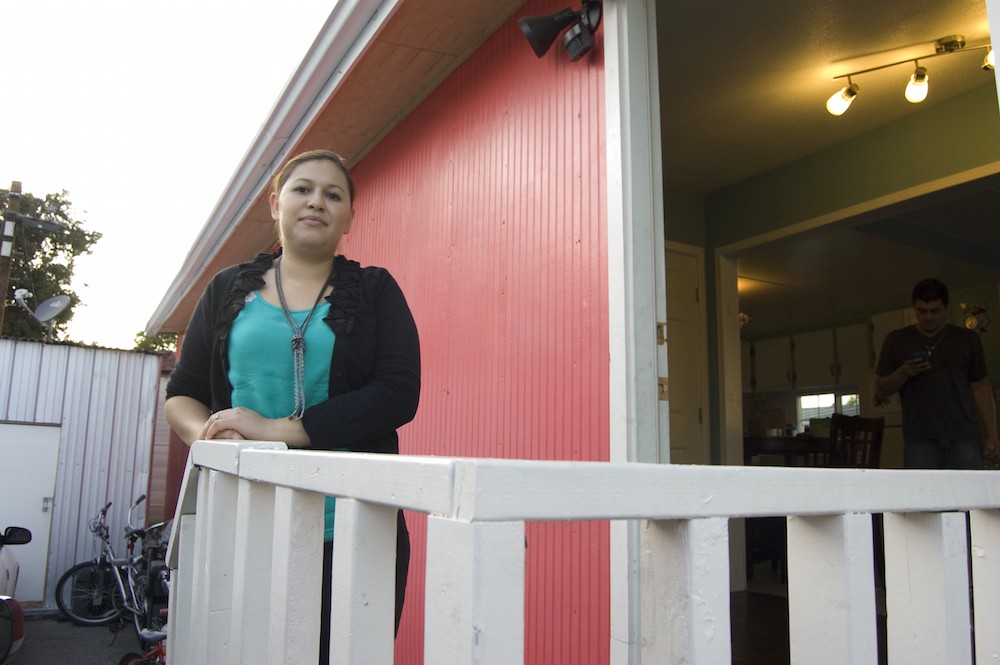
But a quarter of respondents were against assistance for Buena Vista, and some of the comments were rather vitriolic. One person wrote that the park has been a haven of “gang activity.” (It hasn’t.) Another called the study “amateuerish” [sic]. But the prevailing opposition concerned the right of the Jissers to sell the land. “This is private property. Why this survey?” It’s the property owner’s property! She has the right to do what she wants w/it.” “I’m tired of a socialist coercive agenda and don’t support forcing the owners to sell or develop his property because the land users have co-opted his rights.”

Since the formation of the Buena Vista Residents Association in 2012, the Jissers have engaged in an ongoing campaign of passive aggressiveness, according to every park resident person I spoke with. They alleged that the laundry room wasn’t maintained and was full of roaches; that Jisser has increased water bills by thirty or forty dollars per month; and that the response to maintenance complaints is that if they don’t like it, they can leave. (The Jissers did not respond to requests for comment. Nanda, in an interview said, “If it’s going to be a story about the poor Buena Vista residents, frankly, I’ve seen enough articles about that.” She maintained the Jissers’ right to sell the land, adding, “I have a lot of perspective and empathy. I have been through foreclosures, more than any attorney in Northern California, possibly for the state. I have a great amount of respect for those tenants.”) Toufic, they said, has his assistant wash what has been variously described to me as a black Rolls Royce or Mercedes in front of the office. “We call it the little car wash,” Fonseca told me.
In 2013, the residents’ association hired Melissa Morris, a lawyer from the Silicon Valley Law Foundation, who thought that there might be an amicable way to keep residents in the park. Morris contacted a financial consultant who specialized in helping mobile home park residents buy their parks. Through a patchwork of loans and grants from the Department of Housing and Urban Development, state agencies, and philanthropic groups, Morris and the consultant came up with a plan that would allow Buena Vista’s residents to buy the park from the Jissers at what they believed to be the land’s appraised value, with the residents paying off the loans at about the same rate they had paid for monthly rent.
But when the Jissers had the park appraised, they were given two numbers: Kept as a mobile home park, Buena Vista was worth fourteen-and-a-half million dollars. But if the land were up-zoned to allow higher-density housing — a necessary step if Prometheus planned on building apartments — the land was worth thirty million dollars. When Morris presented the plan in August with the lower offer, Nanda, the Jissers’ lawyer, wrote back, “Thank you for the offer but it is respectfully declined.” A few months later, the residents’ association presented the offer once more to see if the Jissers, perhaps exhausted by the protracted procedure, had had a change of heart. They didn’t. Instead, the Jissers continued working out the plan’s kinks, revising it five more times over eight months before the city planning department determined it was complete enough to present in front of the Labadie at the hearings this past May.
Earlier this year, Morris told me, “I’ve been hearing from all different cities about mobile home parks at risk of closure and what’s happening to the Silicon Valley economy, this idea that landowners could cash in, even in cities with mobile home park conversion ordinances — that there’s enough money to be made in selling the land, displacing the people, demolishing the homes, I see this as being the beginning, not as an isolated incident. My sense is that people are watching Buena Vista to see what happens.”
On October 2nd, Labadie, the city’s administrative judge, approved the Jissers’ relocation plan. In his decision, Labadie wrote that the measures offered by the Jissers to relocate the residents were sufficient to meet the 2001 city law. “Although I am mindful of the impact this decision will have on the lives of park residents, my factual and legal conclusions must be based on evidence and reasoned analysis, not emotion or sympathy,” he wrote. Palo Alto’s schools “are among the best in California and are highly valued by park residents,” but Labadie deemed that irrelevant for the purposes of the law, as education was not explicitly stated in the law as a factor when determining a comparable mobile home park. Instead, the factors to be considered are restricted to the law’s plain language: “shopping, medical services, recreational facilities and transportation.”
While Prometheus, the developer with the original option contract to purchase Buena Vista, relinquished its right to do so — no one at Prometheus could be reached to explain why — the city’s approval of the Jisssers’ relocation plan still allows them to sell it at any time to another buyer. The park remains in prime territory; a seven-hundred square-foot apartment in the complex across the street from Buena Vista rents for twenty-eight hundred dollars a month.
A few weeks after Labadie’s decision, I received a text message from Melodie Cheney, a resident of Buena Vista, telling me that the residents were waiting until the New Year to file an appeal. She asked me for my email address, and after I gave it to her, she sent me an invitation to this year’s posada.
New York City, December 4, 2014

★★★ Where dark and damp had wasted the mildness of the previous day, now brightness redeemed the chill. Shadows radiated in different directions; sun flashed off high windows. A turning mail truck sent spots of light dancing up and down the shady cross street. Contrails stretched out sharp and new or old and impossibly wide and cross-striated. A sheet of cloud moved in to the west, and a sunset-like orange glow appeared downriver before three in the afternoon. Then the cloud thinned out to blue again in time for a real sunset, small but luridly pink-shot. A halo surrounded the not-quite-full moon over Cooper Square. The breeze poked at the back of the neck. Helicopters hung in formation a short way downtown.
New York Limericks
New York Limericks
by Hallie Bateman
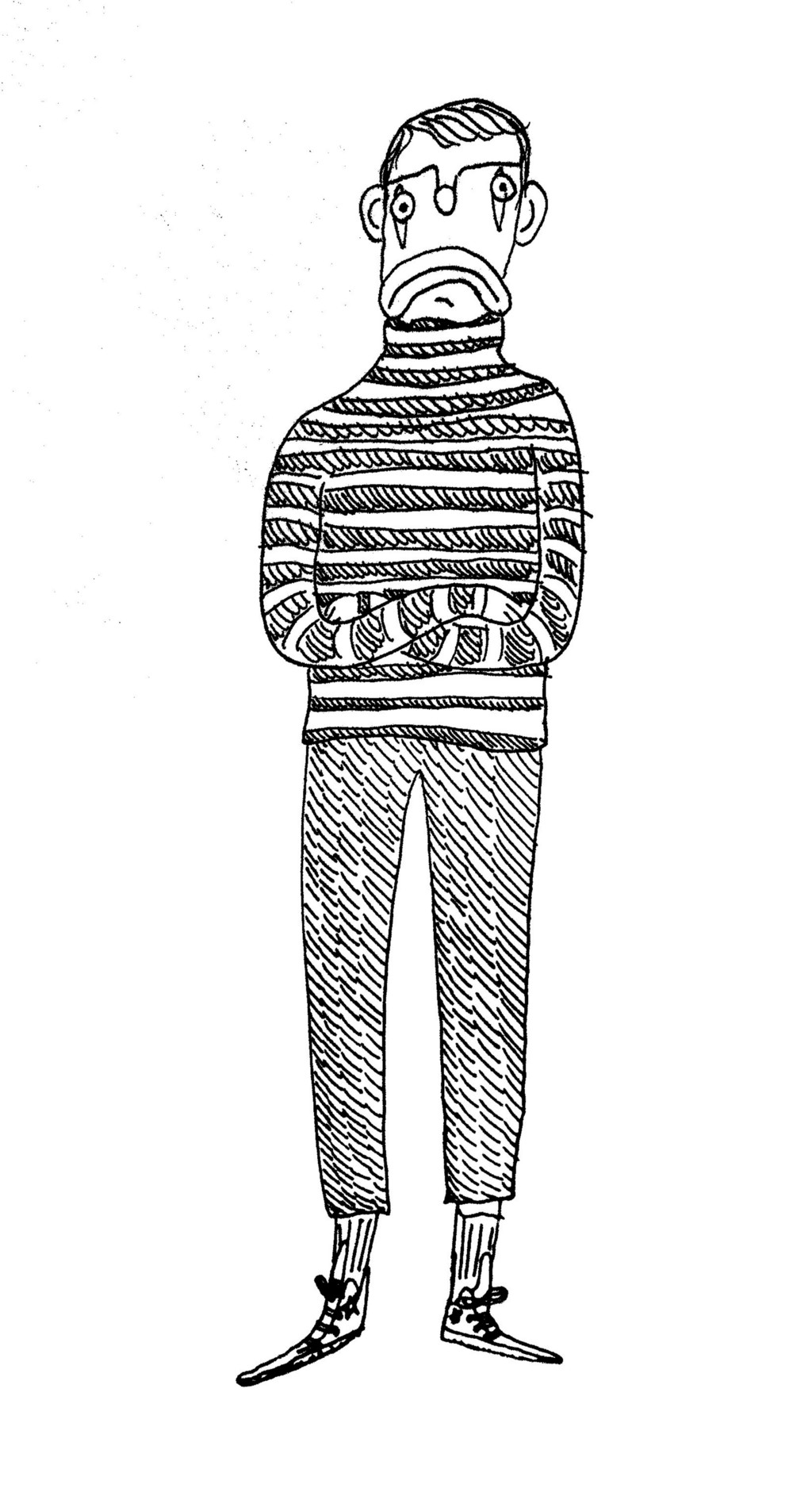
In Red Hook there was a young lad
Who couldn’t help but be sad;
Despite his intent,
He couldn’t pay rent
He really should’ve listened to his dad.
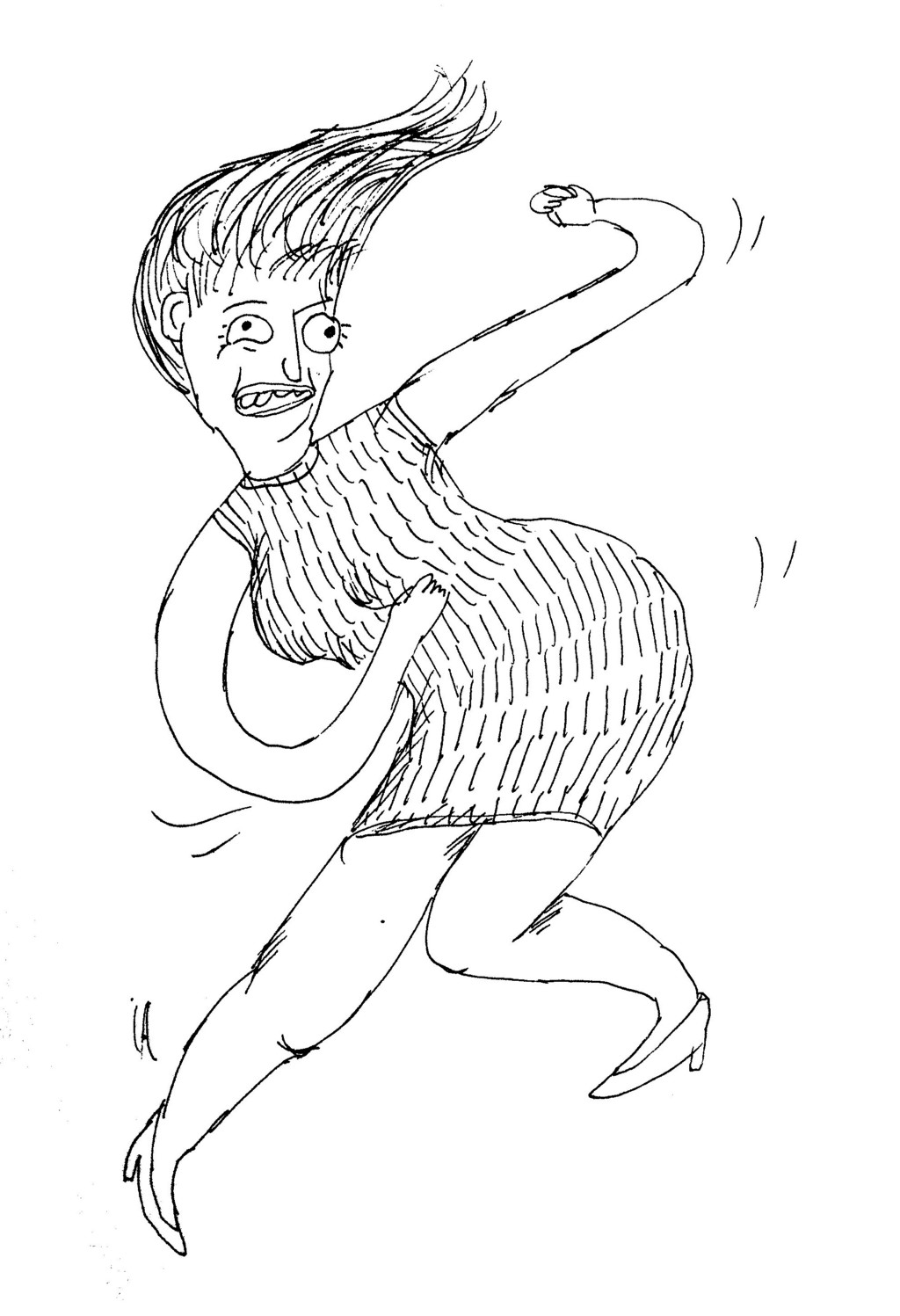
I knew a young lady from Bushwick
who had all manner of ticks:
Her butt swayed and twerked;
Her arms swung and jerked
— on the subway she was a huge liability.

There once was a store in Astoria
Frequented by Eva Longoria;
She’d always buy knives
And when the clerk asked her why
She said, “Oh, it’s a long storia.”
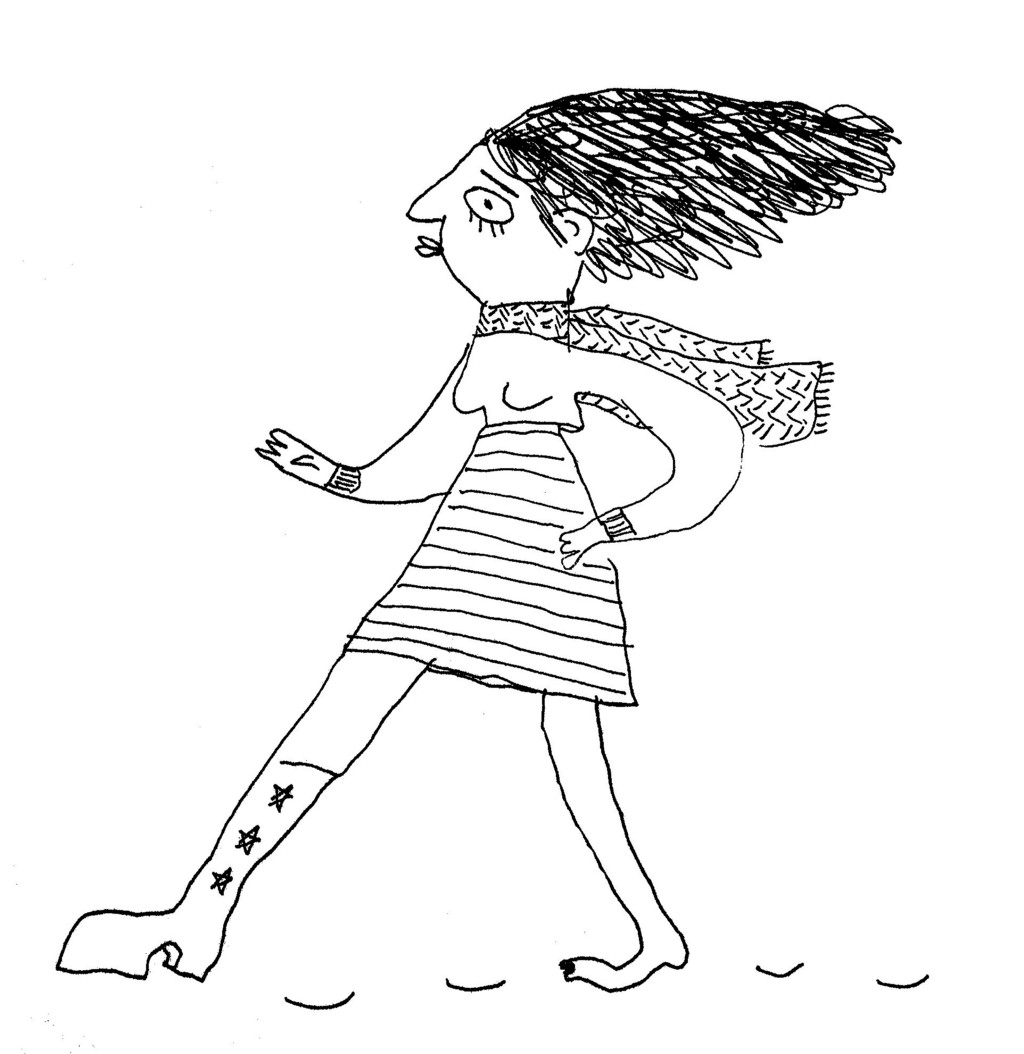
There once was a lady from SoHo
Who had quite an obsession with fro-yo;
She’d hike through a storm
In one single platform
To taste the new salted-cara-mo-yo

There once was a pup from Park Slope
Whose bark was really more of a croak;
It startled some with such violence
They lobbied for him to be silenced,
But his owner firmly said “nope.”

I once knew a bro from Murray Hill
Who thought everything was trill;
Until one day, mid- bar frolic,
He realized he was an alcoholic —
That… was… not… very…. chill.
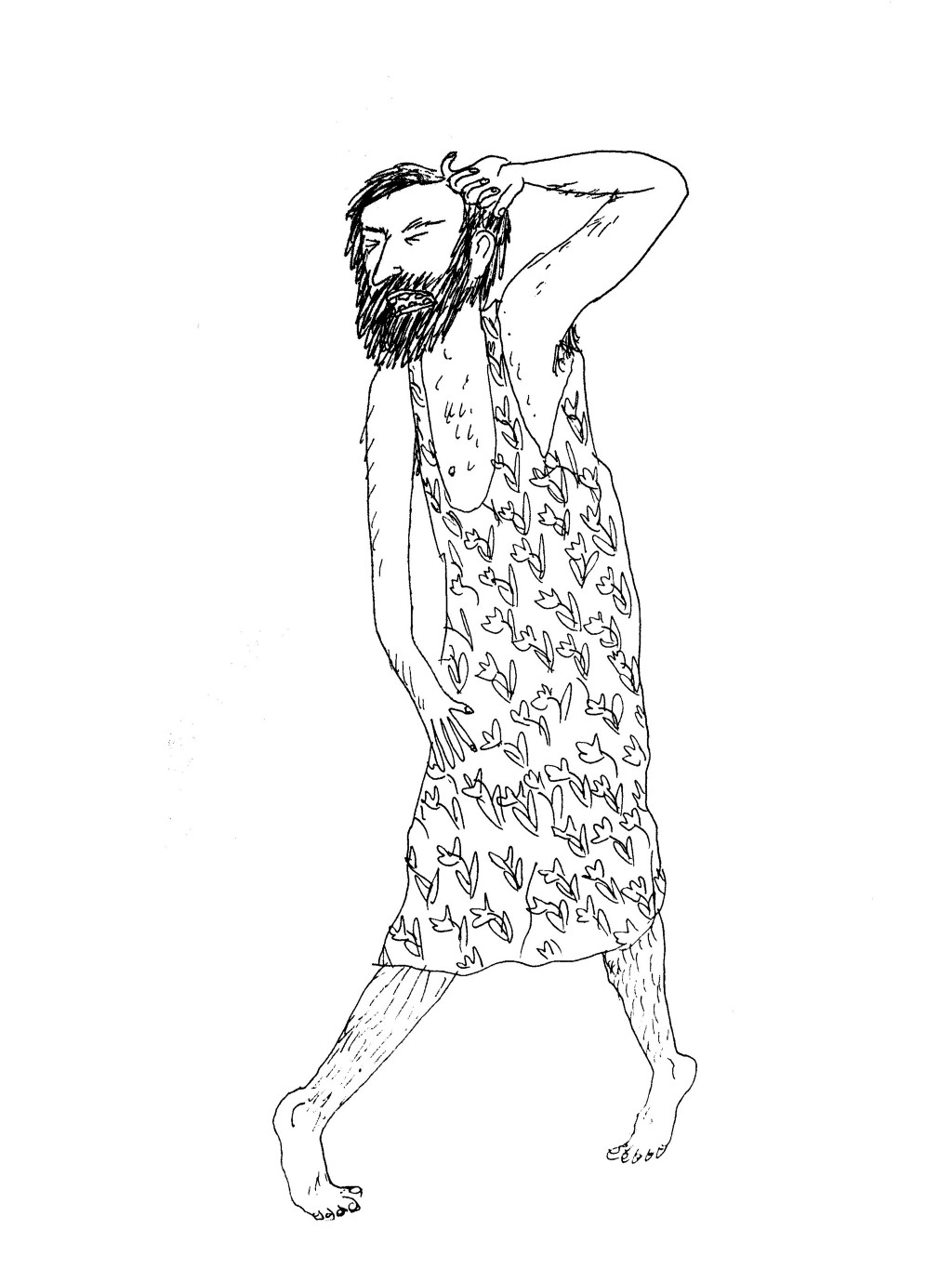
In Hell’s Kitchen a man was depressed
So he went to the church to confess:
“Father, I’ve sinned —
Where to begin…
When she’s gone I like to wear my wife’s dress.”
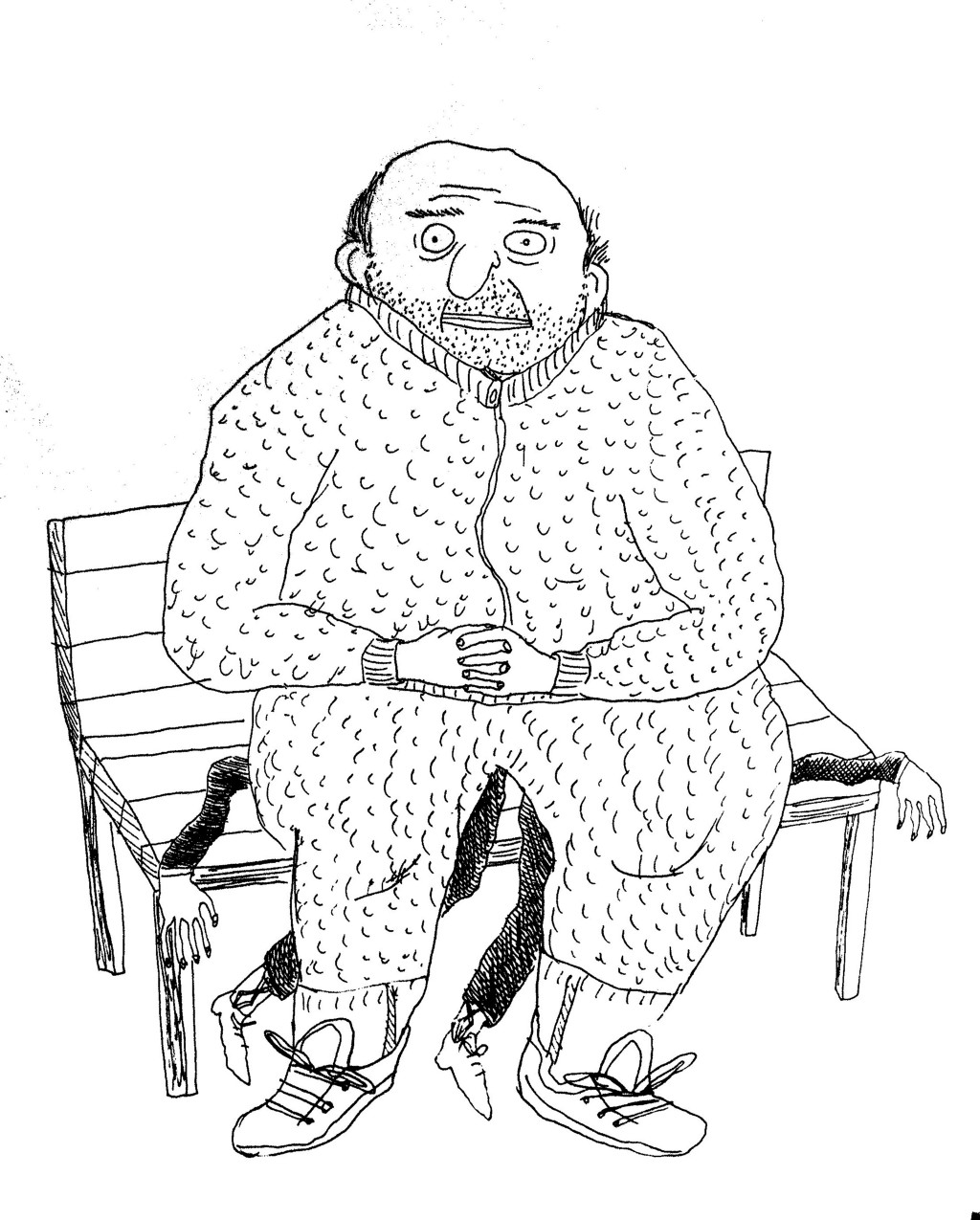
There was an old crony in Coney
Who ate nothing but cheese and bologna;
He was almost all torso
And only got more so;
He once sat on Dermot Mulroney.
5 Easy Ways to Prepare Your Home for the Holidays
by Awl Sponsors

Brought to you by the Quicksilver® Card from Capital One®
Turn up the festivities this holiday season with a few simple additions to your home that will make your guests ooooh in awe. Even if you’re not planning on entertaining, there’s nothing quite like coming home to a winter wonderland after a long day of work.
1. Scented Candles
The simple power of a few scented candles can instantly transform your home. Choose scents that evoke warmth, like cinnamon, vanilla or hazelnut, for an instant pick me up.
2. A Fuzzy Throw
Get cozy by adding a chenille blanket to your couch that makes it easy to stay warm while enjoying a cup of hot chocolate.
3. A Chalkboard
Create a rustic vibe and remind everyone of the holiday occasion with a decorated chalkboard.
4. Festive Hand Towels and Soap
Don’t forget the bathrooms when adding the holiday magic around your home! Some festive holiday hand towels and scented soap will make all the difference!
5. A Winter Floral Arrangement
Skip the poinsettias and update your floral game with small white arrangements. Use a combination of vintage and contemporary vessels to hold white spider mums, seeded eucalyptus and cedar branches. For more impact, line them up down them middle of a table or along a window sill and spray with silver floral spray paint.
For even more reason to get in the holiday spirit, check out the Quicksilver Card from Capital One, which rewards you with unlimited cash back. That means every single gift purchase for your family, friends and co-workers will earn unlimited 1.5% cash back for your wallet. #KaCHING! Check out the video below and head over to Capital One to learn more about earning unlimited 1.5% cash back on every purchase, every season!
Coffee Fancy
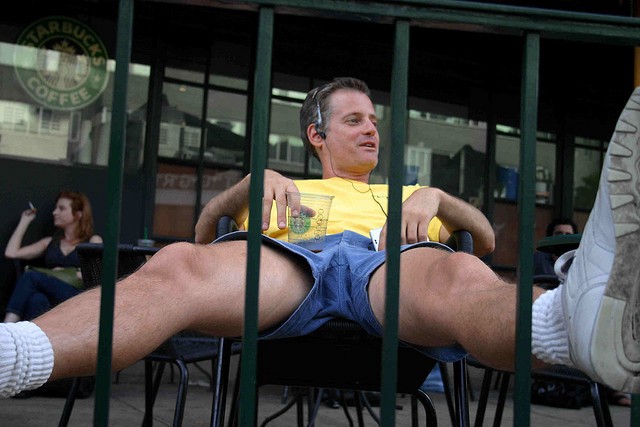
By far, the most remarkable thing about Starbucks’ new Reserve stores, which will not look anything like regular Starbucks stores — “Starbucks is vanquishing to a great extent its green mermaid logo at the new shops and in the product line” — but like something out of a Stumptown fiend’s wettest dreams, with German Probat roasters, Uber boilers, Modbars, Hario pourovers, Japanese siphons, and burlap sacks of single-origin coffee not roasted within an inch of its life, are the grotesque contortions that the company manages to perform in order to avoid saying outright that the coffee it serves in the rest of its twenty thousandish stores is molten sewage. There will be one hundred of these Reserve stores across the globe, serving much better coffee than Starbucks has ever offered, for four to seven dollars per cup. Most of the other stores will continue to be pits of sadness, except for the salted caramel mocha, which is actually pretty good as long as you don’t think of it as like, coffee.
Photo by Elvert Barnes
